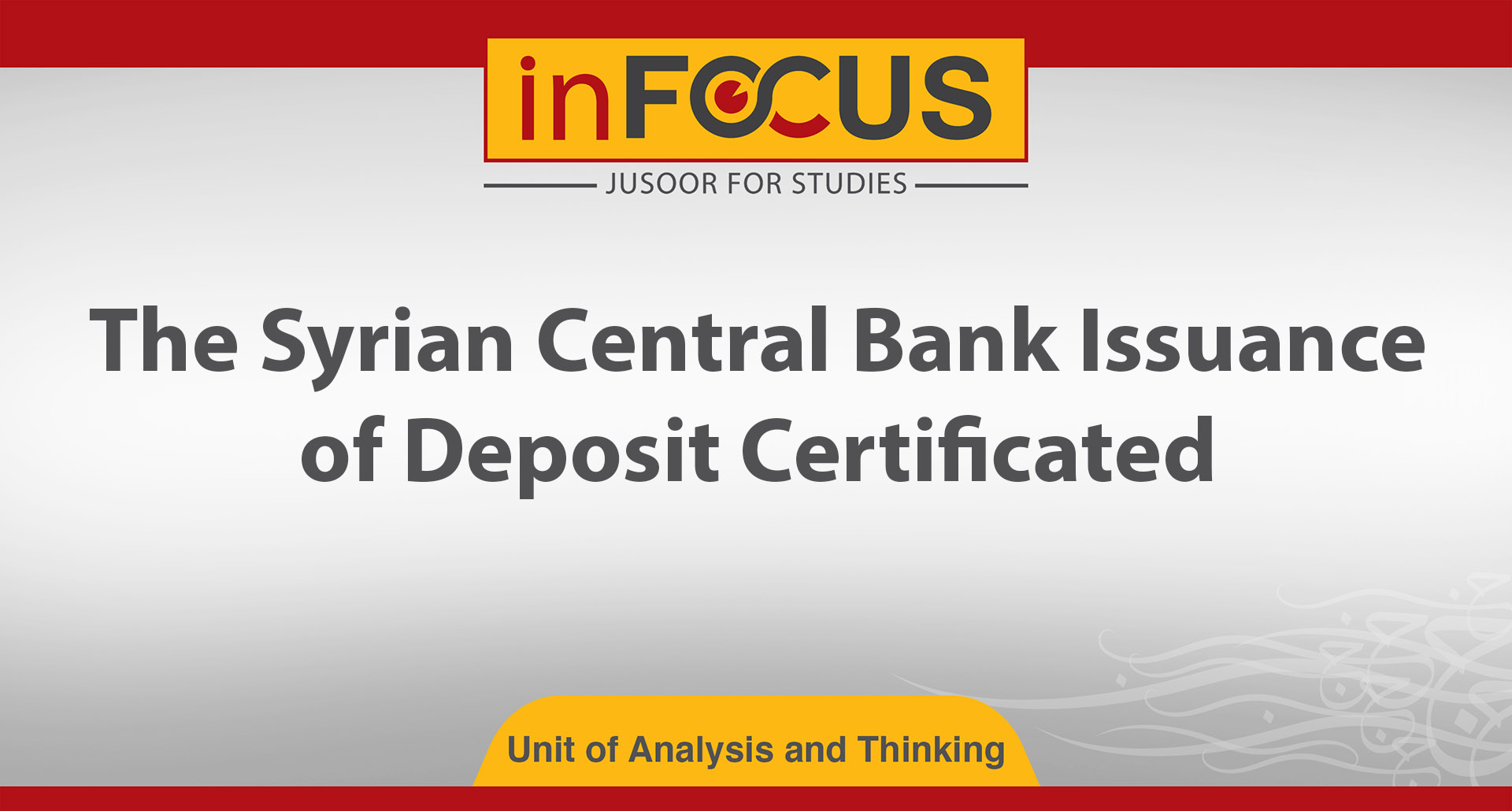The Syrian Central Bank Issuance of Deposit Certificated
Font Size
In Focus | The Syrian Central Bank Issuance of Deposit Certificated
The Syrian Central Bank has offered, for the third time in 2020, a subscription to certificates of deposit in Syrian Pounds (SP) worth 100 million SP for certificates amounting to (approximately 45,000 US Dollars) at the end of October 2020.
With this measure, the Central Bank aims to:
1- Control liquidity and reduce the money supply in the markets thereby curbing inflation and slowing the rise in prices.
2- Create a yield curve that helps banks to more freely estimate their resources thereby activating the banking sector.
3- Secure safe sources of income and create a banking product that can be traded thereby activating the resources of banking investors.
The Syrian Central Bank’s announcement coincides with a sharp rise in prices for various goods and services, the Syrian regime lifting the partial fuel subsidies, and a sharp decrease in the price of the Syrian Pound. This step mainly aims to control liquidity in the market by reducing the supply of currency in the market by withdrawing excess amounts held by private and government banks.
This step is not expected to achieve its goal for two main reasons:
First: The quantities that are being withdrawn from banks are surplus amounts that do not exceed 10% of the cash reserve that banks are expected to hold. These banks face a weak demand for borrowing operations, and it is expected that only government banks will participate in these operations as the old issuances were attended by only 8 banks (6 governmental and two private banks) out of the 17 functioning banks in the Syrian market. The issue of deposits written with government banks is written with part of their capital and part of the savings of government institutions. As such the goal of controlling cash liquidity in the market is not expected to be achieved through this the measure.
Second: It is expected that the Syrian Central Bank will collect in this issuance an amount of (one hundred billion Syrian Pounds) at an interest rate of approximately 7%. This rate is considered low and far below the inflation rates prevailing in the markets, so the goal of stimulating the profits of the banking sector will not be feasible. Banks purchasing this type of bonds will suffer a loss that will be reflected in their annual revenues.
Through this new measure, the Central Bank of Syria is trying to achieve stabilize the currency rate and control the prices of goods and services. This is especially after losing the two most important tools for financial policies: 1) the confidence of Syrian citizens, manifest in citizens’ complete subordination to the Syrian government and its various programs, and 2) the Central Banks’ failure to manage recurrent crises and its loss of most of the cash reserves relied on previously to control the currency price. As such, the Central Bank has introduced and relies on new tools; however, these are not expected to be effective in terms of controlling cash flow or prices. These new tools may simply result in the redistribution or relocation of these funds for a short period based on the length of the time written into the certificate.
Unit of Analysis and Thinking - Jusoor for Studies
To visit the English Telegram channel: Click here








